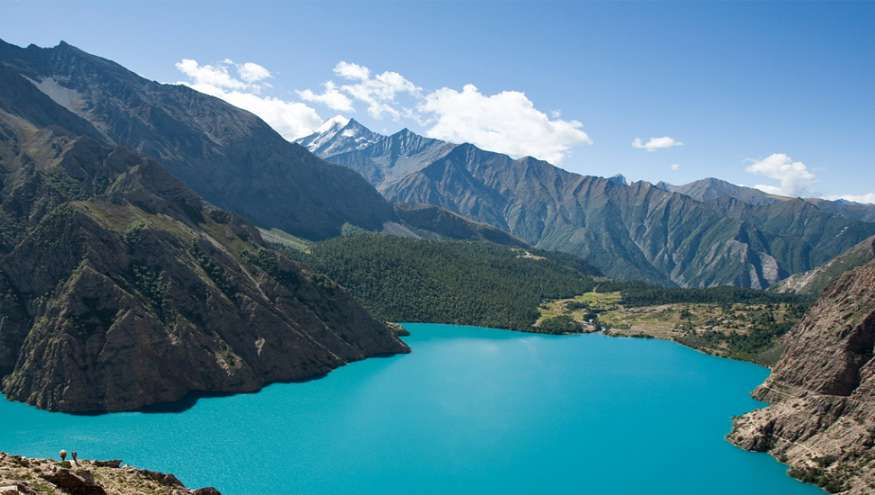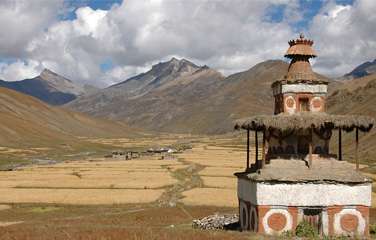Useful Information
Lower Dolpo Trek route
Lower Dolpo Trek begins with a short flight from Kathmandu to Nepalgunj and then to Jhupal. From Jhupal, you begin trekking through villages like Dunai, Tarakot, Khani Gaon, Tarap Khola, and Yak Kharka. The trail will take you to Dho Tarap, where you will take a day off and explore the village. Further, you pass by Tokyu Gaun and cross Numa La Pass & Baga La Pass. The trail then drops down to Ringmo from where you ascend to Phoksundo Lake. Descending through Chepka, you trek back to Jhupal and take a flight back to Nepalgunj.
Lower Dolpo Trek difficulty & Altitude Sickness
Lower Dolpo Trek 21 Days is a difficult trek. The trail follows hilly terrain, steep paths, and crosses pass above 5,000 meters. Likewise, you have to trek in a very remote part of Nepal, where the basic infrastructure is underdeveloped. Therefore, previous trekking experience and high endurance level are needed to be part of Lower Dolpo Trekking. You have to be in good health and shape as well. Jogging and exercising before the beginning of the journey is also recommended.
On Lower Dolpo Trek, you will face high altitude that can result in altitude sickness (acute mountain sickness) if not done properly. Measures like adding rest days in between the trek to let your body acclimatize with the elevation as well as keeping yourself hydrated are very important to avoid AMS.
Best time to go on Lower Dolpo Trek
The best time to go on Lower Dolpo Trek is no doubt monsoon (June to July) because the Dolpo region lies under the rain shadow of Annapurna and Dhaulagiri ranges. Due to this reason, there is almost no rainfall here. Likewise, autumn (September to November) and spring (March to April) are the other best times of the year to go on Lower Dolpo Trek 21 Days.
Accommodation & Meals
You will be staying either in tea houses or tents as per the availability. The teahouse in this part of the Himalayas is very basic. The rooms are quite small with twin-sharing beds and a few pieces of furniture. Similarly, the washroom is common. There is no such thing as a luxurious lodge or teahouse in the Dolpo region. Tents are carried by the team members. We offer high-quality single sleeping tents to all the group members and shared dining & washroom tents.
Meals will be based on the menu of the teahouse. Even though there is no fixed menu, you will see mostly Tibetan and Nepali dishes. While camping, meals will be cooked by the team members. You will be fully equipped with all the necessities while Lower Dolpo Trek with us.
Communication & Electricity
Locals here mostly depend on solar power. Depending upon the village, you may or may not get charging facilities. At some places, you might have to pay a few extra bucks to charge your devices, therefore do carry extra batteries. Likewise, as the elevation increases, the network will get weaker. There will be times when you will not find the cellular network at all.
Travel Insurance
Travel insurance is very important to have during Lower Dolpo Trek. During the emergency, travel insurance will be your best option. Things like air evacuation, medical bills, hospital bills, etc must be covered in the insurance.
Guide & Porter
Trekking in the Dolpo region demands professional guidance by the guide. As per the rule of the Nepal government, you have to have a guide to travel in this part of the Himalayas. Our guides are well-known with the trail and the surrounding here. As the basic infrastructure is very underdeveloped here, you have to carry survival goods as well and porter will help with that. We make sure both our guides and porters are fairly treated while working with us.
Environmental Contribution
The Dolpo region itself is a restricted area in Nepal, highly protected and preserved. While traveling in the Lower Dolpo area, we carry eco-friendly and local equipment as much as possible. We clean our camping area before leaving it and properly decompose all the waste. Likewise, we are also supporting the local community by funding education for children from underprivileged families.



